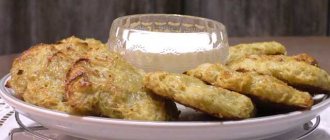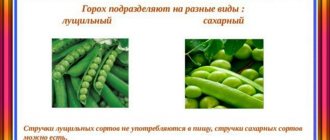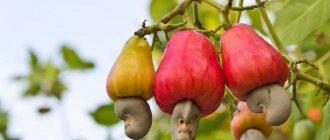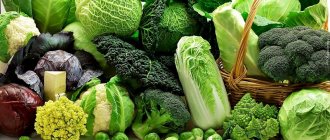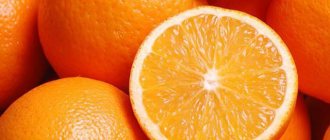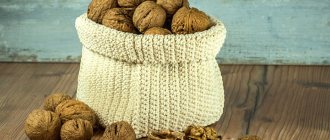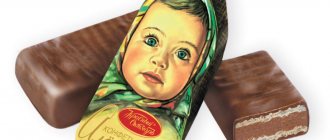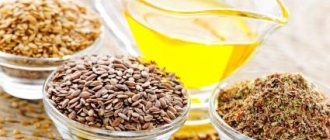Author: Kristina Lobanovskaya, doctor, practicing nutritionist Article updated: 11/09/2020
Ask a Question
Quince is a shrub or small tree with fruits that are characterized by large size, lemon or yellow color, delicate aroma and a pleasant sweetish, but very tart (astringent) taste. The peel of such fruits is initially covered with a fluffy coating, which disappears as it ripens. The shape of quince of different varieties is similar to an apple or pear, but it has firmer and less juicy pulp, which is due to the presence of stony cells in it. For the same reason, the calorie content of quince is also slightly lower than that of an apple or pear, and amounts to 48 kcal per 100 grams or 82–96 kcal per 1 piece. depending on size. Rukt is a leader in the content of useful substances and is considered invaluable for human health. Just one fruit can replenish the daily requirement of almost all elements necessary for the body.
Chemical composition and calorie content of quince
The benefits of quince are due to its rich chemical composition. The fruit contains:
- vitamins: group B (1,2,6,9), C, A, E, PP;
- minerals: calcium (Ca), potassium (K), magnesium (Mg), phosphorus (P), sodium (Na), iron (Fe), cobalt (Co);
- sugars: glucose, fructose, sucrose;
- tannins and nitrogenous substances;
- pectins;
- slime;
- organic acids: malic, tartaric, citric;
- essential oil;
- nitrogenous substance;
- phytoncides;
- ash;
- starch;
- fatty oil;
- water.
Quince has an average calorie content: about 50 kcal per 100 g of product. Quince BJU: carbohydrates are 960 mg, proteins - 600 mg, fats - 500 mg, vegetable fiber - approximately 360 mg.
Product calculator
Nutritional Information Serving Size (g)
| Contents per serving | % of normal | ||
| Calories | 209 kcal | -% | |
| Squirrels | 2.7 g | -% | |
| Fats | 0 g | -% | |
| Carbohydrates | 49 g | -% | |
| Alimentary fiber | 0 g | -% | |
| Water | 0 g | -% | |
Go to your food diary NUTRIENT BALANCE Most foods cannot contain a full range of vitamins and minerals. Therefore, it is important to eat a variety of foods to meet the body's needs for vitamins and minerals.
Find out the content of vitamins and minerals in your menu
Quince: calorie table
| Index | For 100 g | No. in the rating | % of max. |
| Calorie content | 48 | 204 of 1442 | 14% |
| Fats | 0.5 | 170 out of 1295 | 13% |
| Squirrels | 0.6 | 101 of 1366 | 7% |
| Carbohydrates | 9.6 | 556 of 1107 | 50% |
| Water | 87.5 |
Don't like tables? The same in words:
(data from the table, per 100 grams of product) Quince has few kilocalories, only 48 kcal; there is also not a lot of fat, only 0.5 g; proteins are similar - virtually none, only 0.6 g; carbohydrates at the same time are average, about 9.6 g.
Popular varieties of quince
In total, there are more than 400 varieties of this plant in nature. They differ in the time of flowering and fruiting, the size of the flowers, the structure of the leaves, the shape of the fruit, as well as beneficial properties.
Anzherskaya

The plant produces large yellow fruits with a lemon tint, weighing 400 g. This is the most delicious variety of quince. The fruit has a smooth skin and a ribbed surface.
Quince is used in the treatment of throat diseases, cleanses the body of toxins, stimulates peristalsis and eliminates bleeding gums. Angers quince juice is indicated during pregnancy as an effective remedy for heartburn.
Ordinary

The fruits are covered with a dense, fleecy, lemon-colored peel. They can be spherical or pear-shaped. The pulp of the fruit is hard, dry, astringent and has a sweetish taste. There are many seeds inside the fruit. The fruit can be consumed fresh, baked or canned.
This variety is a leader in the content of nutrients. Common quince is used to prevent eye diseases and treat gastrointestinal diseases, helps get rid of helminthiasis and is an effective laxative. The fruit has a softening and regenerating effect, cleanses the body well, improves cardiac activity and strengthens the immune system.
Japanese Chaenomeles
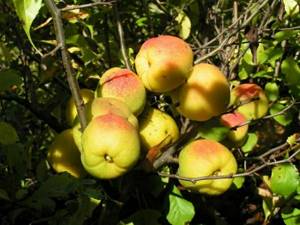
The plant is distinguished by dense bronze foliage, which subsequently acquires a rich dark green color. The fruits of Japanese quince are yellow with green spots.
The fruits contain a lot of pectin and iron. Thanks to this composition, the fruit is used to remove toxic compounds from the body. Quince restores strength after serious illnesses, is used for chronic fatigue syndrome and has the ability to lower blood sugar.
Chinese quince
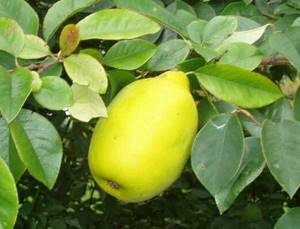
Quince blooms with pink or white flowers, 0.05 m in diameter, and has apple-like oval or spherical fruits containing a large number of seeds. The weight of the fetus can reach more than 0.5 kg.
A distinctive feature of this variety is the increased concentration of essential oil in the fruits and a high percentage of vitamin C. The fruits are rich in iron, pectin, citric and malic acid. They regulate the activity of the nervous system, control brain activity, normalize sleep and improve memory.
What are the benefits of quince for the body of women and men?
Here are 8 scientifically proven health benefits of quince.
Contains powerful antioxidants
Many of the benefits associated with quince can be attributed to the fruit's rich supply of antioxidants.
Antioxidants reduce metabolic stress, reduce inflammation, and protect your cells from damage from free radicals, which are unstable molecules (4).
Research shows that some antioxidants in quince, including flavonols such as quercetin and kaempferol, reduce inflammation and protect against chronic diseases such as heart disease (5, 6).
Summary:
Quince contains a variety of antioxidants that can reduce metabolic stress and inflammation by protecting your cells from free radical damage.
May help manage nausea caused by pregnancy
The most common unpleasant symptoms during early pregnancy are nausea and vomiting.
Some research suggests that quince may help relieve these symptoms.
One study of 76 pregnant women noted that 1 tablespoon (15 ml) of quince syrup was significantly more effective in reducing pregnancy-induced nausea than 20 mg of vitamin B6 (7).
Although these results are promising, more research is needed.
Summary:
A recent study found that quince syrup was significantly more effective than vitamin B6 in reducing pregnancy-related nausea and vomiting. However, more research is needed.
May relieve digestive problems
Quince has long been used in folk medicine to treat various diseases of the digestive tract (2).
Recent research suggests that quince extract may protect intestinal tissue from damage associated with inflammatory bowel diseases (IBD), such as ulcerative colitis.
In a study on rats with ulcerative colitis, those given quince extract and juice had significantly reduced colon tissue damage compared to the control group (8).
However, human studies are needed.
Summary:
Although human studies are needed, animal studies suggest that quince may protect against IBD-related intestinal damage.
May treat stomach ulcers
Early research suggests that plant compounds in quince may help prevent and treat stomach ulcers.
In a test tube study, quince juice inhibited the growth of the stomach ulcer-causing bacteria Helicobacter pylori (2).
Additionally, a study in rats found that quince extract protected against alcohol-induced stomach ulcers (9).
Although these results are encouraging, more research is needed.
Summary:
Test-tube and animal studies suggest that quince may protect against stomach ulcers, but human studies are needed.
May Reduce Acid Reflux Symptoms
Several studies suggest that quince syrup may help manage symptoms of gastroesophageal reflux disease (GERD), commonly known as acid reflux.
A 7-week study of 80 children with acid reflux found that taking quince syrup daily was as effective as the medication traditionally used to relieve symptoms of the condition (10).
A study of 137 pregnant women found that a 10 mg dose of quince syrup taken after meals was as effective as a traditional medicine in relieving acid reflux symptoms (11).
Additionally, a 4-week study of 96 children with acid reflux found that using quince concentrate along with traditional medications relieved symptoms—such as vomiting, food aversions, belching, and abdominal pain—more than taking one medicine (12).
However, more research is needed.
Summary:
Several studies show that quince syrup is as effective as traditional medications used to treat acid reflux symptoms.
May protect against certain allergic reactions
Quince may alleviate various allergy symptoms by suppressing the activity of certain immune cells responsible for allergic reactions (2).
Gencydo, a commercial allergy medicine, combines lemon juice and quince fruit extract. Several small studies support its ability to prevent and treat mild allergic reactions such as runny nose and asthma (2).
Additionally, studies in mice note that quince fruit and seed extracts may prevent and treat artificially induced allergic dermatitis. However, it remains unclear whether they would have the same effect in humans (2, 13).
Although some experts suggest that quince-based products may be a safe alternative to traditional allergy medications, more research is needed.
Summary:
Compounds in quince may combat common minor allergic reactions such as inflamed skin, runny nose and asthma. However, further research is needed.
May support proper immune function
Quince can support your immune system.
Several test-tube studies show that it has antibacterial properties, which may help prevent the overgrowth of some harmful bacteria, such as E. coli and Staphylococcus aureus (2).
Additionally, one quince contains 15% of the RDA for vitamin C, which is essential for a healthy, well-functioning immune system (3, 14).
One fruit also provides 6–8% of the RDA for fiber. Adequate fiber intake supports the beneficial bacteria found in your digestive tract, collectively known as gut flora (3, 15).
Maintaining healthy gut flora can reduce inflammation and improve resistance to infections from harmful bacteria in the digestive tract (15).
Summary:
Quince contains vitamin C and fiber, two nutrients that support a healthy immune system. It may also have antibacterial properties.
Beneficial features
The rich vitamin composition allows the fruit to be used to treat colds of viral and bacterial etiology. In addition, quince:
- helps reduce intoxication in case of poisoning;
- improves liver activity;
- helps reduce blood cholesterol levels;
- eliminates signs of anemia;
- relieves symptoms when stomach problems occur and is an effective remedy for anemia;
- has diuretic properties, helps fight swelling.
Infusions from quince seeds have an enveloping and antiseptic effect and are successfully used as lotions for eye diseases, as well as to relieve inflammation and reduce cough during colds.
For diseases of the digestive system
A positive effect on the organs of the digestive system is achieved due to the presence of tannins in quince. Despite the sufficient amount of fiber, the fruit has a binding effect. Therefore, it can be used for gastrointestinal disorders, especially diarrhea and flatulence.
In folk medicine, not only the pulp of the plant is used, but also the leaves and seeds from it. A laxative decoction is prepared from them, which helps with long-term constipation.
For disorders of the cardiovascular system
It is useful to eat quince for people with cardiac disorders. Due to the presence of large amounts of potassium in the fruits, they are indicated in the treatment of hypertension and functional disorders of the nervous system, and help cope with stress, as they have a calming effect.
The fruits of the exotic plant are used to prevent cancer and various diseases of the cardiovascular system. They are useful for people who are obese, since the fruit contains very little glucose. In addition, thanks to its diuretic properties, quince can be used to remove excess fluid from the body.
The nutritional value
Quince fruits are among the leaders among fruits in terms of the amount of nutrients. Their unique beneficial effect on the body is due to the fact that such basic parameters as the composition of BJU, the benefits and harms, as well as the calorie content of quince are in an optimal ratio. Therefore, it is recommended to use it for the prevention and treatment of a variety of health problems, appearance and excess weight.
Proteins fats carbohydrates
Fruits contain a minimum of fat, some protein, ash compounds, as well as a large amount of complex carbohydrates and dietary fiber. So, in fresh quince with a caloric value of 48 kcal per 100 grams there is:
- proteins – 0.6 g;
- fat – 0.5 g;
- carbohydrates – 9.8 g.
Dried quince contains 95 kcal/100 g of calories:
- proteins - 0.7 g;
- fat - 0.4 g;
- carbohydrates - 17.5 g.
Quince juice contains 45 kcal/100 g of calories:
- proteins – 0.5 g;
- fat – 0 g;
- carbohydrates – 10.6 g.
In quince compote with a calorie content of 79 kcal/100 g:
- proteins – 0.4 g;
- fat – 0 g;
- carbohydrates – 20.0 g.
In store-bought quince jam, the calorie content is 273 kcal/100 g:
- proteins – 0.4 g;
- fat – 0.2 g;
- carbohydrates – 70.6 g.
Homemade quince jam contains 164.3 kcal/100 g of calories:
- proteins – 0.2 g;
- fat – 0.2 g;
- carbohydrates – 41.1 g.
In addition, the composition of the mature pulp includes glucose, ethyl esters, gum, many tannins, fructose, pectins, catechins, epicachetins, malic, myristic, tartaric, citric, isoleic and tartronic acid.
Macro- and microelements
The chemical composition of the fruits in question includes almost the entire set of minerals necessary for a person. They contain the following microelements in the greatest quantities:
- copper is an active participant in hematopoietic processes, has a beneficial effect on connective, epithelial and bone tissue, accelerates the production of collagen, improves the functionality of the endocrine glands, forms part of the structure of vascular walls, and resists attacks by free radicals;
- manganese - neutralizes the damaging effect of excess iron on cell membranes, strengthens arterial tissue, increases vascular resistance to the formation of cholesterol plaques and helps reduce cholesterol levels in general, normalizes the development of bone structure, activates digestion processes;
- iron is an indispensable component of hematopoietic processes, ensures the transfer of oxygen by blood cells, participates in oxidation reactions, restores proper metabolism of vitamins, increases resistance to infections, and prevents rapid fatigue;
- chromium - increases enzymatic activity in the metabolism of carbohydrates, catalyzes the synthesis of proteins and fatty acids, participates in the regulation of glucose levels and enhances insulin productivity, normalizes hematopoietic processes, promotes the burning of excess fat;
- iodine - plays a decisive role in the physiology of the thyroid gland and forms the basis of its hormones, regulates proper energy metabolism, is responsible for normal body temperature, controls the rate of biochemical reactions, maintains water-electrolyte balance;
- silicon - improves the condition of soft tissues, bones and cartilage, strengthens vascular walls, improves the cardiac and vascular system, increases the absorption of a number of vitamins, micro- and macroelements, strengthens resistance to infections, protects and improves the nutrition of neurons;
- cobalt - lowers the concentration of cholesterol and removes it from blood vessels, accelerates cell renewal, promotes the development of bone structure, activates hemoglobin synthesis, improves iron absorption, inhibits respiration and the division of malignant cells, reduces the level of “harmful” and increases the amount of “good” cholesterol;
- molybdenum - improves the microflora of the gastrointestinal tract, helps strengthen teeth and bones, catalyzes the oxidative process, increases the absorption of vitamin C, helps synthesize amino acids, and is an essential component of the tissue respiration mechanism.
Also, the formula of these fruits contains a high concentration of some macroelements, each of which has its own set of beneficial effects on a person:
- potassium - is part of the potassium-sodium mechanism and ensures the functioning of muscle (including cardiac) tissues, normalizes the structure of intracellular fluids, helps increase the strength and elasticity of vascular walls, has a diuretic and choleretic effect, restores water balance;
- magnesium - saves from depression and unmotivated aggression, stimulates brain function, restores emotional balance, significantly reduces the severity of PMS symptoms in women, increases the efficiency of nerves and muscles, and is involved in the processing of sugar into energy;
- calcium is the main participant in the formation of bone tissue and, in general, the entire musculoskeletal system, increases the speed and productivity of metabolism, maintains good heart health, lowers blood pressure, strengthens teeth and bones, ensures blood clotting to block ruptured blood vessels;
- Phosphorus - helps bones grow normally and not deform, catalyzes all reactions at the biochemical level, promotes the normal development of neurons, is used to transport energy, improves the proper functioning of hormones, maintains liver health, and activates digestion.
All of these elements are found in fruits in an easily accessible form, therefore they are completely absorbed and have the most pronounced effect on the body.
Vitamins
The vitamin component of quince composition is no less rich than the mineral one. These fruits contain a significant portion of the vitamins that a person needs to replenish daily. First of all, these are the main immunomodulators and antioxidants:
- C - acts as an indicator of the level of health, provides protection against bacteria and viruses, promotes the formation of lymphocytes and antibodies, prevents the risk of complications after colds, improves collagen synthesis, strengthens the foundation of muscle fibers, soft tissues, blood vessels and bones, reduces the negative effects of stress;
- A − improves cell regeneration and fights free radicals, reduces the likelihood of secondary formation of cancerous tumors after surgical removal, supports vision, prevents heart and vascular diseases, regulates the level of “good” cholesterol, and improves protein synthesis;
- beta-carotene - synthesized in the body into vitamin A, prolongs youth and maintains beauty, helps protect cells from destruction by free radicals, produces a powerful anti-carcinogenic effect, promotes proper metabolism, helps accelerate skin regeneration after burns and other damage;
- E - creates protection of cells from the harmful effects of external factors, maintains the condition of all tissues at the proper level, ensures the proper functioning of the reproductive organs (especially in women), helps to conceive a child and the proper course of pregnancy, prolongs women's youth and beauty.
Also, ripe fruits contain the bulk of B vitamins, the presence of which ensures the following results:
- B1 - protects cells from destruction by oxidation products, ensures proper metabolic processes, regulates the conduction of impulses in synapses, reduces the likelihood of developing paralysis and neuritis, supports the proper functioning of the digestive tract;
- B2 - puts tissue respiration in order, promotes energy production, ensures proper breakdown of biofuel, is an integral part of enzymes, regulates the reproduction of stress hormones, maintains healthy and youthful skin, and improves mucous membranes;
- B3 - restores proper cellular respiration, is necessary for the complete breakdown of macronutrients, maintains skin and hair in normal condition, accelerates the restoration of the oral mucosa, improves the functioning of the digestive system;
- B4 - has a beneficial effect on the liver and prevents its obesity, increases the metabolic rate, enhances the absorption of vitamins, cleanses the walls of blood vessels, lowers cholesterol levels, and participates in the breakdown of carbohydrates by the pancreas;
- B5 - participates in the processing of biofuel for energy production, improves intellectual abilities and long-term memory, ensures the synthesis and metabolism of vitamins, prevents the appearance of cardiovascular pathologies, stimulates brain activity, reduces symptoms of apathy and chronic fatigue;
- B6 - has a diuretic effect, enhances the efficiency of insulin, helps reduce the concentration of sugar in the blood, is involved in the breakdown of BJU and the processing of macronutrients into energy, eliminating insomnia, relieving night spasms and cramps of the limbs, normalizing the absorption of vitamins;
- B9 - improves tissue development, supports the immune and cardiovascular systems, participates in the production of “happiness” hormones, normalizes blood formation processes, increases the functionality of leukocytes, ensures the transmission of signals between neurons, and improves the mechanism of excitation/inhibition of the nervous system.
Due to its many beneficial properties and low calorie content, quince is called a valuable dietary superfood, the regular but reasonable consumption of which helps to significantly improve health, figure, well-being and mood. Low allergenicity and a small number of contraindications make this fruit a universal component of a health-improving and dietary diet. But we should not forget that there are some restrictions and, if necessary, eat the fruits not fresh, but in cooked form.
Quince in the diet of people of different Vorzasts
Quince is useful for all people, but different categories have their own characteristics.
Adults
Japanese pear is a healthy fruit for adults and the elderly. Tea made from the fruits and seeds of this plant improves immunity, helps aging people eliminate swelling due to diseases of the cardiovascular system, cleanses the liver, improves peristalsis and is used as a general tonic and antioxidant.
The seeds help women cope with the symptoms of menopause. It is recommended to use fruit juice to treat hemorrhoids. Quince fruits reduce blood cholesterol levels, relieve swelling, help get rid of excess weight and are used to treat many diseases.
During pregnancy and breastfeeding
A woman’s diet during pregnancy should include a sufficient amount of vitamins and microelements, since the health of the unborn baby depends on this. It is important for expectant mothers to eat plenty of fruits and vegetables, especially fresh ones. I am one of them
The fruit is a source of useful substances: copper, iron, potassium, calcium, phosphorus, pectin, etc. Expectant mothers are recommended to eat quince three times a week. This way you can avoid stomach clogging and swelling under the eyes.
Quince helps prevent anemia in the fetus, eliminates symptoms of toxicosis, restores blood circulation, saturates the mother's body with vitamins, strengthens the immune system, and increases the body's resistance. Quince juice and decoctions are absolutely harmless, so pregnant women can use them in the treatment of colds.
Women who are pregnant can eat quince with virtually no restrictions. It is worth considering that this fruit can cause allergies, but this happens extremely rarely.
When breastfeeding, eating quince raw is prohibited. Fruits can cause constipation in a baby and cause allergies. Raw fruits are harmful to the intestines of the youngest mother.
Children
Quince is recommended to be included in the diet of children from a very early age. Raw fruits of this type are too hard and tart for a child’s stomach, which is why they should be given to children only after heat treatment. A child can try the fruit for the first time no earlier than when he is 10 months old and only if he does not have a tendency to allergies or problems with the gastrointestinal tract.
Boiled or baked fruit in the amount of half a teaspoon should be introduced into the baby’s diet, after which the child’s condition should be monitored for two days. In the absence of manifestations of food allergies and constipation, quince can be prepared twice a week, gradually increasing the portion from 5 to 50 grams.
If digestive problems occur, the fruit will have to be excluded from the diet.
An attempt to introduce a vitamin product into the diet can be repeated after a couple of months. The best option for a baby would be quince fruit compote. The drink is absorbed quite well, does not irritate the throat and does not cause a sore throat.
Raw fruits can be given to children starting from the age of two. Before doing this, they should be washed well, peeled and seeds selected. Quince seeds contain a substance - the glycoside amygdalin, which has a toxic effect. Under no circumstances should it be allowed to enter the baby’s stomach, as it can cause poisoning of the body. The villi on the skin of the fruit irritate the laryngeal mucosa, and their use can lead to a prolonged cough.
Contraindications to the use of quince are:
- pleurisy;
- bowel dysfunction;
- individual intolerance of the body.
When buying quince for children, you should choose unrotten, ripe and large fruits, with a uniform yellow color, without dents or green spots on the surface.
Dishes
Fragrant quince fruits are almost never consumed raw due to their coarse pulp and astringent taste. Slices of fresh quince are often added to tea instead of lemon or to borscht to add a pleasant sourness to the dish. In addition, it is often baked with different fillings - meat, legumes or sweet. But for the most part, such fruits are used to prepare canned products - jams, compotes, jellies, candied fruits and other preparations. When combined with more nutritious ingredients, quince helps reduce the calorie content of ready-made dishes or preserves and at the same time significantly increases their nutritional value and taste and aromatic characteristics.
Baked
Baked quince fruits are the most common dessert of these fruits. When prepared correctly, it turns out very tasty and is suitable for both a regular snack and a festive dinner. In any case, the calorie content of this delicacy depends on the additional ingredients, since nutritious foods such as nuts, butter and honey or sugar are most often used for this.
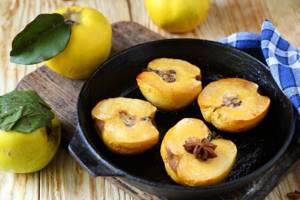
Before use, the fruits are washed and thoroughly wiped with a napkin, then the tops are cut off and the core is removed with a sharp knife or a special spoon, without removing too much pulp. You should get small depressions into which you first pour 1 tbsp. l. honey, sprinkle with a pinch of cinnamon, and then add 5 g of chopped walnuts. The nuts can be ground in a blender or broken into large pieces if desired.
The bottom of the baking dish is generously greased with butter, a little water is poured in and the stuffed fruit is laid out. Bake in an oven preheated to 185ºC for half an hour. During the process, if necessary, add a little water so that the dessert does not burn. Check readiness with a toothpick.
When prepared according to this recipe, the resulting baked quince has a calorie content of 115 kcal/100 g. It is served warm or cold, or in combination with ice cream or cream. But it should be borne in mind that the indicated calorie content will increase depending on the fat content and the amount of specified additives.
Sweet rice
A rice-quince dessert created according to this recipe can be an excellent healthy breakfast option for children and adults. It turns out to be nourishing and tasty, and the calorie content of 180 kcal/100 g allows you to use this dish as an afternoon snack.
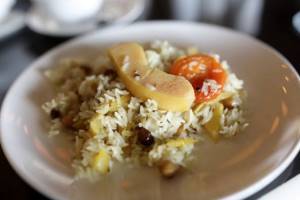
To prepare, wash, peel and cut into cubes 2 medium-sized quince fruits. Transfer to a saucepan, add 50 g of butter and simmer until soft. Enter 3 tbsp. l. granulated sugar, 1 tsp. vanilla sugar, 0.5 cups of rice cereal and 2 cups of water. Stir gently, cover with a lid and bring to a low simmer. Add 50 g of chopped walnuts, mix, cover and remove from heat. Let it brew and garnish with mint sprigs and nut slices before serving.
If desired, you can omit sugar from the recipe. This will make the taste more natural and the benefits more pronounced. In addition, with this method of preparing sweet rice with quince, the calorie content of the finished dish will decrease to 154 kcal/100 g.
Pilaf
In addition to sweets, the rice-quince combination makes a very tasty pilaf with meat - beef or lamb. To prepare, cut 15 g of lard into small cubes, place in a cast iron casserole and heat over low heat until the lard melts. At this time, finely chop half a head of garlic, add to the lard and fry for 1 minute. Peel and cut 1 quince fruit into small cubes, pour into a cast iron pot with garlic and fry for 5 minutes until browned on all sides. Place the toasted mixture in a separate bowl.

The cauldron is not washed, but 400 g of beef (lamb) cut into pieces is placed in it and fried without adding fat, adding salt to taste. The meat is fried for 10 minutes until almost completely cooked. Then add the previously fried garlic-quince mixture, mix, pour in water so that it covers the meat halfway, and simmer until cooked.
Completely fill the meat with water, lower the head of garlic and bring to a boil. After this, add 200 g of rice cereal and level the surface with a spoon, without stirring under any circumstances. Add a little salt on top and scatter 1 tbsp evenly. l. turmeric. Without stirring or covering with a lid, cook the pilaf over high heat, periodically adding hot water so that it covers the rice. When the rice cereal is ready, reduce the heat and simmer until the water evaporates. Stir immediately before use, removing the head of garlic. With this method of preparing the dish, the calorie content of pilaf with quince will be 215 kcal/100 g. If desired, you can season it before serving with 1 tbsp. l. olive oil. Then the indicated calorie content will increase to 219 kcal/10 g.
Classic pie
In a deep bowl, combine 150 ml of warm kefir, 150 g of sugar and 2 eggs. Mix by lightly beating with a whisk or fork. Pour in 2 tbsp. l. vinegar, stir and add 2 cups of sifted wheat flour mixed with 1 tsp. baking soda. Knead the airy thick dough without lumps (like pancakes).
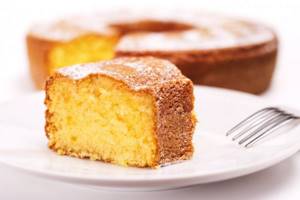
Grate 1 quince on a coarse grater, add it to the dough and mix. Pour into a greased pan, place in an oven preheated to maximum and immediately reduce the temperature to 170ºC, bake for 30 minutes until browned. Check readiness with a toothpick and finish baking if necessary.
Remove the cake from the pan and cool on a wire rack. When baking in a silicone mold, turn it upside down. Decorate as you wish. The calorie content of such a pie is 216 kcal/100 g, and if you sprinkle it with powdered sugar or grated chocolate, this figure will increase to 235 kcal/100 g.
Charlotte
Charlotte with quince is an excellent replacement for traditional apple charlotte. It is prepared with cinnamon, which harmoniously combines and complements the aroma of these fruits. First prepare the filling. Heat 1 tbsp in a frying pan. l. butter, adding 4 tbsp. l. granulated sugar and 10 g of cinnamon. Wash, peel, cut 100 g of quince pulp into thin slices and fry them on both sides in an aromatic butter-cinnamon mixture until soft. Remove from heat, leave to cool, and at this time knead the dough.
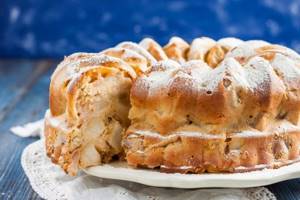
Beat 1 egg into a bowl, add 1 tbsp. l. olive oil and granulated sugar. Beat well, pour in 150 ml of prepared sugar syrup and beat thoroughly again. Add 200 g of sifted flour mixed with 1 tsp. soda The dough should be a little thick.
First, place the fried fruit slices into a greased form, then pour in the dough and spread it in an even layer. Bake in the oven at 190ºC for half an hour. Allow to cool slightly in the pan and turn out onto a tray. The result is a light, airy, but very nutritious pie, 100 grams of which contain 265 kcal. It is consumed cold.
Grated pie with jam
Grated pie with quince jam is prepared quickly and turns out tasty, although very high in calories - 100 grams of this delicacy contains 346 kcal/100 g. First, chop 100 g of margarine with a knife, add 200 g of sifted wheat flour and grind into fine crumbs. Add 1 egg, 2 tbsp. l. sugar, a pinch of soda and salt, a little vanillin. Knead the dough, wrap in cling film and leave in the refrigerator for 1 hour or overnight.
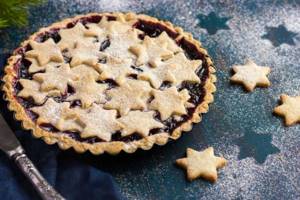
A not too large mold (approximately 22 cm in diameter) is covered with baking paper, and the sides are greased with margarine. Take half of the cooled dough, pinch off small pieces and evenly cover the bottom with them. Spread 400 g of jam on top in an even layer.
The second half of the dough is similarly torn into small pieces and covered with jam. Bake the pie in an oven preheated to 180ºC for 40 minutes. During this time, its surface should acquire a light brown color. Remove the pie from the oven, let it cool in the pan, then remove and cut into pieces.
Cupcakes
This muffin recipe involves the use of whole grain flour and quince filling with prunes, therefore, in terms of beneficial properties, such baked goods are significantly superior to other flour products and sweets.
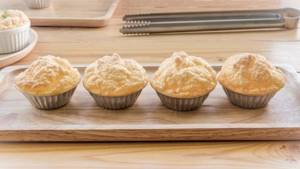
Before cooking, soak 50 g of prunes for 10 minutes. Grind 1 cup of oatmeal and 0.5 cup of almonds with a blender, mix, add 1 cup of whole grain flour, 3 tbsp. l. granulated sugar and 0.5 tsp. baking powder.
Drain the prunes and cut them into small pieces. Similarly, grind 100 g of quince pulp. Pour into the flour mixture, add 250 ml of water and 2 tbsp. l. olive oil. Knead the dough, place it in molds and bake in an oven preheated to 170°C for half an hour. The resulting muffins with prunes and quince with a calorie content of 273 kcal/100 g are excellent for vegetarian, lenten and even dietary or sports nutrition.
Compote
Quince compote has a delicate aroma and sweet and sour taste. It strengthens the immune system, acts as a diuretic and astringent, and helps eliminate gastrointestinal problems. At the same time, the calorie content of the drink is 79 kcal/100 g, but if you reduce the amount of sugar by half, you can reduce this figure to 48 kcal/100 g.
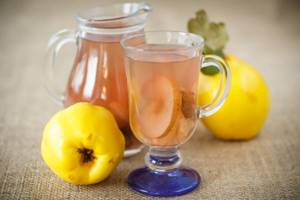
To prepare compote, fruits are washed, peeled, cut into 8 parts, the core is removed from each and immediately immersed in water acidified with citric acid (10 g per 1 liter) to soften the pulp. After this, take it out onto a clean towel, let it dry and put it in jars up to the level of the hangers. Separately, boil the syrup at the rate of 300 g of sugar per 1 liter of water and immediately pour it boiling into jars so that the liquid covers the fruit slices and cover with lids. Sterilize for 1 hour and cool.
Jam
Quince jam is very tasty and, despite the long heat treatment, a very healthy delicacy with a fragrant aroma and rich taste. When using this recipe for homemade quince jam, the calorie content of the finished dish is reduced to 164 kcal/100 g, whereas for a store-bought product this figure is 273 kcal/100 g.
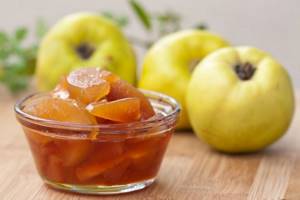
To prepare such a dessert, wash, peel and cut into slices 6 kg of quince fruits. Transfer to a saucepan with a thick bottom, pour in 4 liters of water, put on fire and cook at a low simmer for about a quarter of an hour. Then drain the liquid, add 6 kg of granulated sugar, boil a strong syrup and immediately pour it over the boiled fruit. Place on low heat and cook until the slices turn a reddish color. Pour into sterilized jars and close with lids.
If desired, you can reduce the amount of water, then the jam will be thicker. But at the same time, the calorie content of the product will also increase - up to 210 kcal/100 g. In any case, due to the large amount of sugar it contains, jam should not be overused in order to avoid excess weight and dental problems.
Quince in weight loss
A weight loss diet with quince is very popular among adherents of a healthy diet. Weight loss is achieved thanks to the laxative, choleretic and diuretic properties of this fruit. It has the ability to improve metabolism, cleanses the intestines well and rids the body of toxins.
The duration of diet therapy is three weeks. This involves complete exclusion from the diet of fatty, fried, salty foods, sweets, as well as cakes and pastries. The consumption of day-old rye bread and other dietary products is allowed. The final result in this case largely depends on the calories consumed.
Sample daily menu:
- Breakfast - porridge from any cereal, one apple and tea from quince fruits and leaves.
- Second breakfast - dried fruits or any nuts.
- Lunch - soup, a small piece of lean meat, quince compote.
- Afternoon snack - a glass of yogurt, kefir, fermented baked milk or a little cottage cheese, any fruit juice.
- Dinner - a dish with stewed quince, a glass of green tea or compote.
The serving size for each meal should not be more than 200 g. For dinner, you should always prepare a quince dish. It can be pureed, stewed or boiled fruit. During treatment, under no circumstances should you eat at night. It is recommended to have dinner no later than 6 pm.
It is highly advisable to combine diet with moderate physical activity.
How to eat quince correctly
Quince season is late autumn. You should enjoy eating quince; the aromatic, healthy fruit is great for preparations, baked goods, meat dishes, and desserts.
Fruit slices boiled in honey are not inferior in taste to candied fruits and marmalade. Healthy freshly squeezed juice has a pleasant taste; sugar is added to it, if desired, to make the healthy drink more enjoyable.

Fresh fruits are tart and hard, but boiled ones contain pinkish, tender pulp with a pear flavor. Making a “golden apple” is not difficult:
- Peel the fruit, cut it into slices and remove the seeds;
- Blanch the fruit slices in water for 25 minutes;
- sugar is added to the broth (800 g per 3 cups of broth);
- the sugar syrup is boiled and then the quince slices are poured in;
- the pieces are soaked in syrup for several hours;
- the composition is boiled again, introducing citric acid to remove the cloying taste.
In the resulting jam, quince pieces have aroma, taste and benefits. The main thing is to avoid prolonged boiling in order to preserve the beneficial vitamin composition.
In cosmetology
Due to the content of a large amount of fruit acids, the fruit is widely used in cosmetology. Masks, creams, balms, lotions and tonics are made from the pulp, leaves and seeds.
Quince pulp helps get rid of acne, nourishes, cleanses and tones the skin, and has regenerating properties. A tonic is made from fruit juice to lighten freckles and eliminate age spots. The fruit is used both in its pure form and as one of the ingredients included in cosmetic products.
What is a quit apple?
Quince is a fruit-bearing plant belonging to the Rosaceae family that grows in warm climates. The fruits are harvested in regions such as:
- Türkiye
- Caucasus;
- Dagestan;
- Turkmenistan;
- Middle Asia;
- Australia;
- Europe.
Quince is used not only for culinary purposes. Due to the content of a large amount of vitamins, minerals and essential oils, the fruits of the plant have been used in medicine since ancient times.
People are interested in the question: is quince a fruit or a berry? It is related to the apple and pear and is therefore classified as a fruit.
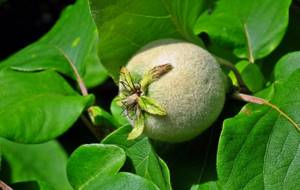
The plant has been known to mankind for more than 4000 years.
What does it look like
The deciduous quince tree can reach a height of 2 to 5 meters. It has obliquely rising branches with ovoid-shaped leaves. The flowering period occurs in May-June, and full ripening of quince fruits is observed by October.
The fruit is a spherical or pear-shaped apple with a terry covering. Fruits may have a rough or smooth surface. Their weight does not exceed 100 g, although cases have been recorded when one specimen reached 2 kg. Quince pulp is not juicy and quite hard. Inside there is a core with brown seeds.

Oblong fruits
What are the types
Quince trees growing on loamy soil produce the largest harvest of fruit. Among the popular varieties:
- Japanese. An evergreen shrub up to 2 m high with red flowers and fragrant fruits. The pulp of Japanese quince contains several times more fruit acid than other varieties. Fresh fruit juice should be diluted with filtered water.
- Ordinary. Quite tree with large edible fruits. The plant is cultivated mainly in the Volga region, Crimea, Transcaucasia, Greece and Central Asian countries. Common quince can be apple-shaped, pear-shaped and Portuguese.
- Chinese. The variety is distinguished by the presence of aromatic fruits with fleshy pulp. The fruit has a pronounced sourness and light viscosity.
The varieties presented above have many varieties: Muscat, Golden Ball, Krasnodar, Marble, Persian Sugar, Amber, Champion and others.
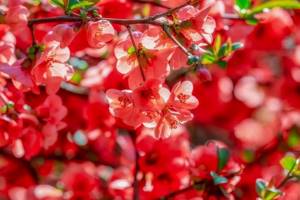
Japanese quince flowering
Contraindications for use
Despite the usefulness of quince, if used incorrectly, it can be harmful to human health. The seeds of the plant should not be crushed or chewed. When they are destroyed, amygdalin is released, the effect of which is enhanced in combination with vitamin C. The substance is toxic and can cause intoxication of the body.
Contraindications to the use of quince are:
- stomach and duodenal ulcers;
- pleurisy, pneumonia;
- chronic constipation;
- allergy to components contained in the fruit;
- diseases of the gastrointestinal tract;
- inflammation of the larynx.
In all other cases, quince is useful, but it is recommended to use it within reasonable limits.
Compound
Fresh fruits are rarely eaten because they have an astringent and tart taste.
This is influenced by tannins, which are contained in large quantities. The composition of quince fruits includes many vitamins B, C, mineral salts and trace elements: iron, magnesium, copper, titanium, manganese, nickel, calcium, boron.
In order for fruits to be suitable for consumption and nourish the body with beneficial properties, people learned to prepare various dishes from them, which turned out to be tasty and healthy.
The calorie content of fresh quince per 100 grams is 40 kilocalories.
In terms of nutritional value, the product per 100 grams contains:
- 0.6 grams of protein;
- 0.5 grams of fat;
- 9.6 grams of carbohydrates;
- 0.8 grams of ash;
- 84 grams of water.
Making jam
The product can be prepared for the winter. There are several ways to prepare it.
Recipe No. 1 jam with lemons
To make jam you need:
- 2 kg of ripe fruits;
- 1.6 kg sugar;
- 2 lemons.
Fruits for making jam must be ripe and undamaged. Cut dry washed fruits into 2 parts, remove seeds. Then cut into slices and squeeze lemon juice on them.
Cover the chopped quince with sugar and leave for 24 hours. During this period of time, the fruits will release juice and the sugar will dissolve. Afterwards you need to boil the jam for 50 minutes. This time is enough for the mixture to thicken and become dark in color with an aromatic odor. Place the finished jam into jars and roll up.
The calorie content of such quince jam is 273 kilocalories per 100 grams of product.
Recipe No. 2 Jam with nuts
The usual jam recipe can be varied by adding walnuts. A dessert prepared according to this recipe will be satisfying and nutritious.
Popular folk recipes
There are many proven recipes with quince that can be used to treat various diseases.
| Indications | Recipe | How to use |
| Sore throat and dry cough |
| Strain and take 1/3 cup three times a day before meals |
| Asthmatic attack |
| Take 2 tbsp. l. 4 times a day, regardless of meals |
| Angina |
| Drink 3-4 tbsp of medicine. l. 3 times a day, preferably after meals |
| Anemia |
| Take 3-4 tbsp. l.three times a day for anemia |
Before using folk remedies, it is recommended to consult a specialist.
Propagation by seeds
Quince reproduces well by seeds. To do this, many gardeners sow seeds before winter. Seed material can be purchased at the store or collected independently. To do this, seeds are collected from the largest and ripest fruits just before sowing. A month before frost, the seed is placed in prepared holes to a depth of 1 cm. The distance between rows is maintained at 15 cm, between holes - 5 cm. The plantings are covered with earth and mulched. With this sowing, seedlings appear in mid-May. In order for the bush to produce a harvest, it is planted in a sunny place. Quince can grow and bloom well in the shade, but it will not bear fruit.

The ripest fruits are selected for collecting seeds.
You can also grow quince from seeds at home. To do this you need:
- Store the collected fruits in the refrigerator.
- At the end of January, collect the seeds, mix them with wet sand in a ratio of 1:3 and place them in a plastic bag with holes for air intake.
- Quince seeds must be stratified before planting. To do this, they are put in the refrigerator for 2.5 months. It is necessary to moisten the sand periodically to avoid mold formation.
- In April, the seeds are sown in prepared soil. The soil should be nutritious with medium acidity.
- Young seedlings with proper care reach 1.5 m by autumn.
- When planting in open ground, you need to ensure that the depth of the planting hole matches the depth of the pot.
- The distance between young plants should be at least 1 m.

Young seedlings are planted in open ground a month before the onset of frost.
And a little about secrets.
The story of one of our readers, Inga Eremina:
I was especially depressed by my weight; at 41, I weighed as much as 3 sumo wrestlers combined, namely 92 kg. How to completely lose excess weight? How to cope with hormonal changes and obesity? But nothing disfigures or makes a person look younger than his figure.
But what can you do to lose weight? Laser liposuction surgery? I found out - no less than 5 thousand dollars. Hardware procedures - LPG massage, cavitation, RF lifting, myostimulation? A little more affordable - the course costs from 80 thousand rubles with a nutritionist consultant. You can, of course, try to run on a treadmill until you go crazy.
And when will you find time for all this? And it's still very expensive. Especially now. Therefore, I chose a different method for myself.
Source

